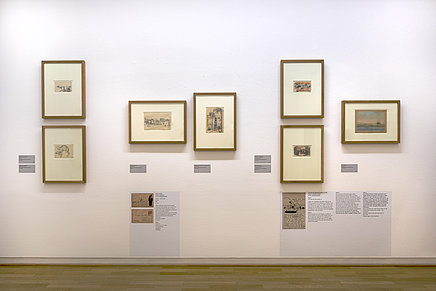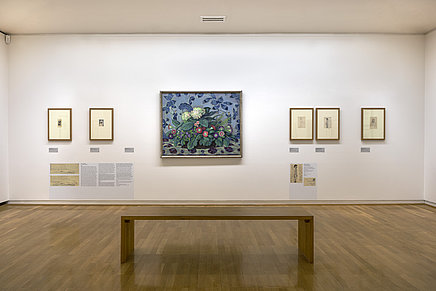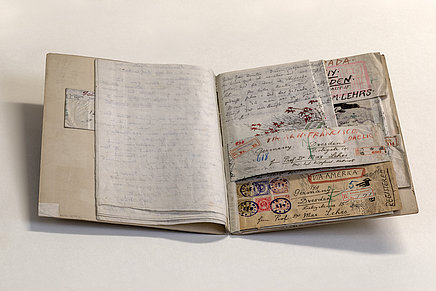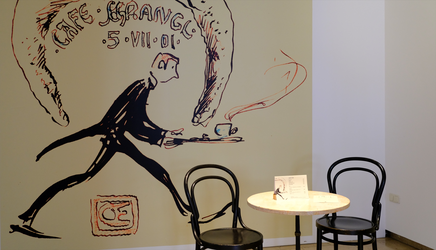Emil Orlik to Max Lehrs
Czech Art in Three Generations
March 31 to June 18, 2023
Emil Orlik sent around 440 letters and postcards to his friend Max Lehrs from 1898 to 1930. At the time, the art historian was working first at the Königliches Kupferstichkabinett (Royal Prints and Drawings Gallery) in Dresden. Later he became director of the Kupferstichkabinett in Berlin (1904–8) and thereafter returned to his first place of work in Dresden, again as director. He had Orlik’s correspondence bound in three albums, which now form part of the Graphic Art Collection of the KOG. This set of works does not simply contain revealing information about Orlik’s life, travels, and artistic projects. It also offers a number of drawing and other graphic works with which the artist adeptly and humorously enriched his written works.

Catalogue
Artist’s Mail from All the World
Emil Orlik (Prague 1870–1932 Berlin) worked primarily with prints and drawings and was in especially great demand for his portraits. After his studies in Munich and a phase as a freelance artist in Prague, in 1905 he moved to Berlin to take up a professorship at the Staatliche Lehranstalt (State Teaching Institute) of the Kunstgewerbemuseum (Arts and Crafts Museum). Orlik spent much time crisscrossing Europe and Asia and later America. His two visits to Japan in 1900–1901 and 1912 were groundbreaking for him. As a connoisseur of the Japanese color woodcut, he contributed to the dissemination in Central Europe of a technique that helped shape Art Nouveau.
This exhibition presents the unique correspondence of Orlik and Lehrs in full for the first time. In addition to albums with original works, all of the letters and postcards can be viewed virtually in detail in a media kiosk. The juxtaposition of thematically related drawings, watercolors, etchings, woodcuts, and lithographs from the Graphic Collection’s extensive holdings of Orlik’s work offers fascinating insights into the artist’s life, numerous trips, and diverse artistic techniques.









